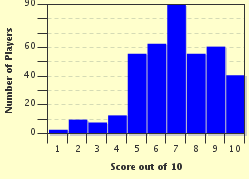Quiz Answer Key and Fun Facts
1. With its reintroduction to Yellowstone National Park in the United States, which majestic nocturnal chorister once more serenades the western forests?
2. Which bird, with the Latin name Luscinia megarhynchos, has been immortalized in the words of poets such as Shakespeare, Keats, Chaucer, Homer, and Virgil largely as recognition of its beautiful twilight song?
3. The water boatman is a predatory insect that lives in lakes and streams. It also has an extraordinary talent of producing music utilizing which body parts?
4. What acrobatic species of baleen whale (Megaptera novaeangliae) demonstrates a proclivity for night-time underwater singing?
5. What insect, often mistakenly thought to be a locust, uses organs called tymbals to generate night-rhythms that can be as loud as 120 decibels?
6. Every night of summer, over 1.5 million singing mammals surge from beneath the Congress Avenue Bridge in Austin Texas. Which of the following is considered the rockstar of the bat world?
7. Which of the following amphibians, a popular dissection specimen in many high school biology labs, has a booming night-time voice?
8. Which bird, which has a talent for mimicking other bird's songs, sings endlessly during the day and often in the night-time hours?
9. One of these owls is considered to be one of the loudest and most piercing night-time musicians with a call that can resemble an angry dog or a screaming woman. Which one?
10. Fittingly, which mammal which is the largest in the world, also owns the title of loudest night-time vocalizer?
Source: Author
coachpauly
This quiz was reviewed by FunTrivia editor
gtho4 before going online.
Any errors found in FunTrivia content are routinely corrected through our feedback system.


